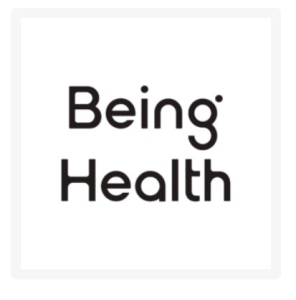The LGBTQ+ community faces unfair treatment and discrimination from their colleagues. It is exaggerated when a person is of color face and LGBTQ+. They are compounded with challenges because of the burden of being LGBTQ+ and color pressure, which is why they are mistreated. LGBTQ+ and BIPOC individuals simultaneously experience racism, biphobia, and homophobia at different times, affecting their mental and health wellness.
There is a large number of people who fall under the two groups. Some states have about half of their citizens are people of color and LGBTQ+ altogether.
This article will discuss what an LGBTQ+ person means and being a person of color and how this community can be supported.
Understanding LGBTQ+ and BIPOC
LGBTQ+ is the acronym for lesbian, gay, bisexual, trans, and queer or questions. The positive sign at the word represents other identities that people may identify with. They include asexual, non-binary, two-spirit, and intersex, among others. The non-binary group is usually included in the trans group, though they are named independently due to historical erasure. LGBTQ+ are simply people who engage in romantic relationships with people of the same gender, transgender, and non-binary.
What is BIPOC?
BIPOC is an acronym for black, indigenous,(and) people of color. POC generally stands for all people of color worldwide, including brown, Asian and black. The term has been gaining popularity recently to signify that people of different colors face different levels of treatment and injustice. Black and indigenous people face more discrimination, racism, and unfair treatment than people of other colors.
Who are Multiple Minorities?
A multiple minority person has been identified in more than one category. They include a person who is both an LGBTQ+ and a BIPOC, a black person who is disabled, or a disabled queer.
Living as LGBTQ+ and BIPOC
Oppression, homophobia, racism, biphobia, and transphobia are some challenges that an LGBTQ+ person of color may suffer. The greatest challenge is that a person experiences more discrimination and unfair treatment since one becomes a victim of their community. This is because you are discriminated against not because of color but because you are among LGBTQ+. Multiple minorities of LGBTQ+ and BIPOC undergo more microaggressions compared to their single-minority colleagues.
LGBTQ+ and BIPOC teens are more subjected to low self-esteem, depression, suicidal attempts, distress, and more risk of HIV than those who are LGBTQ+ or BIPOC only.
Homophobia in People of Color (BIPOC)
People of color experience racism just like BIPOC, who are LGBTQ+. An aspect like homosexuality is considered evil and immoral by black people more than white people. It is taken with different levels of understanding and perception by the two. A BIPOC who is LGBTQ+ will experience unfair treatment and discrimination from people of their color.
Homophobia is also more rampant in first-generation families than in the second generation. This can be challenging for parents’ offspring who migrated to another country being LGBTQ+. They must simultaneously deal with the challenges they face in the new country for being LGBTQ+ and people of color.
Racism in the LGBTQ Community
The LGBTQ+ community may not be as welcoming to people of color who are LGBTQ+ as you could think. White supremacy and racism seem to control each society all around the world. It is a challenge to even San Francisco, an example of liberal havens and queer where LGBTQ+ racism is a problem.
Most LGBTQ+ and BIPOC people are denied health insurance and quality health services in countries like San Francisco. They are discriminated against in dating apps and physical relationships and sometimes remain homeless.
The Need to Persevere as LGBTQ+ and BIPOC
Surviving in such environments being LGBTQ+ and BIPOC, there is a need to be resilient and relaxed. You experience negative compliments from everyone at any point. This may lower your self-esteem, depress you, and make you develop suicidal thoughts. Children who are BIPOC and LGBTQ+ are discriminated against at school and face racism at home. LGBTQ+ teens have lesbophobia and homophobia from their colleagues.
This torture of being a BIPOC and LGBTQ+ continues to affect you in adulthood, and you develop weakness and loneliness as colleagues become harsh to you.
Politicized Personality
The thought that you are LGBTQ+ and a BIPOC can be depressing and oppressive. You think you are representing multiple demographics while others represent a single one. The idea of having a politicized personality is brought from the fact that the systems we interact with are meant for standard identities. This exposes the LGBTQ+ and BIPOC communities, who cannot lead a private life as the systems are fed with the knowledge to serve people with standard identities. Their attention is drawn due to the existence of the systems.
Supporting LGBTQ+ and BIPOC Community – Practice Intersectionality
Intersectionality is paying attention to levels of discrimination and treatments others are facing and taking kind action to stop the act. It helps you to be a kind, caring, and conscientious person.
This means that you have to employ intersectional justice. It involves considering not only white people but also people of color. Protecting minorities, distributing inequalities, and fighting discrimination and racism. You may also advocate for housing and access to health insurance for LGBTQ+ and BIPOC people.
We need to take seriously the problems of BIPOCs who are LGBTQ+ by driving our focus and finding solutions. When we have a feminine challenge, let’s focus on how the issue affects women of color as we check how it affects white women.
The Intersection of LGBTQ+ and BIPOC- Final Thoughts
The intersection of LGBTQ+ and BIPOC identities is a great challenge for this community. They experience racism, homophobia, homelessness, depression, and low self-esteem, among other challenges. These kinds of oppression must be managed and intersectional policies adopted to decentralize the negative implications LGBTQ+ and BIPOC go through.















